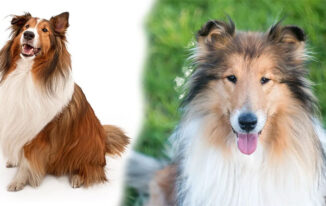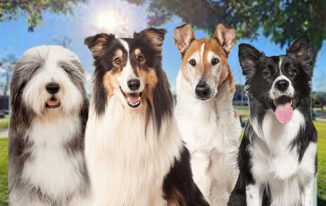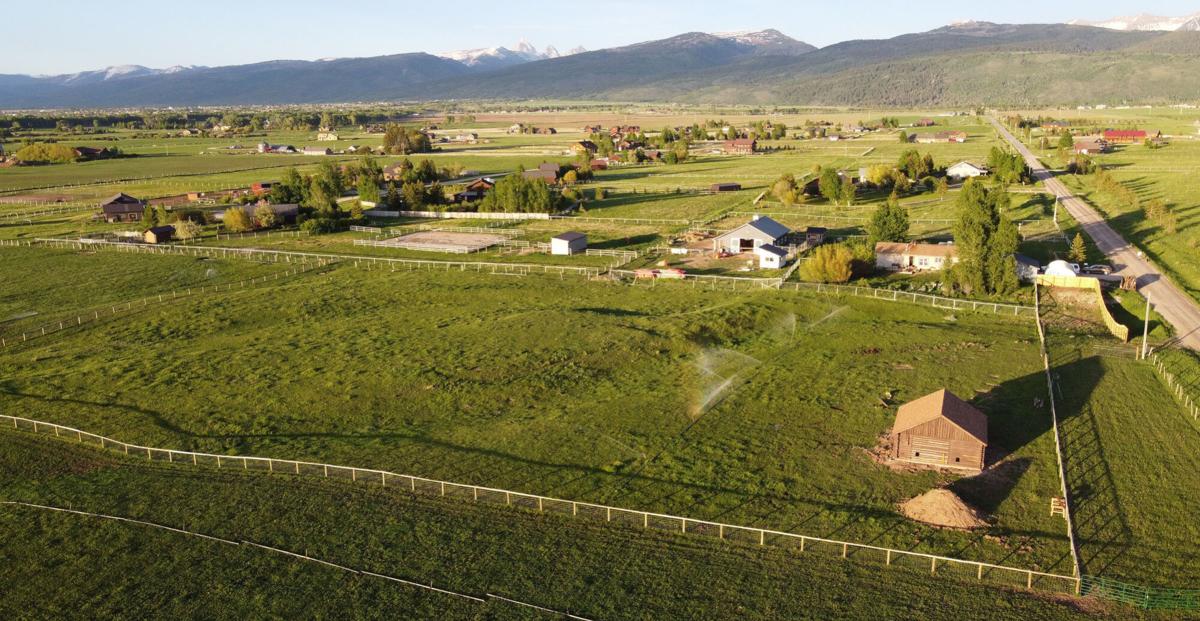
GlobalP / Getty
Few canines require an experienced dog owner more than these two herding wonders, the border collie and Australian shepherd. They both have bright-eyed charisma, outstanding energy, and an eager work ethic that’s unsurpassed.
Plus, they can point a paw next to the word ‘intelligence’ in the dictionary. Brian Kilcommons is the founder of Great Pets Resort, a boutique training facility in Connecticut. “Living with a border collie or Australian shepherd is like living with a Mensa student,” he says. “They are two dogs who can train you if you’re not experienced with herding breeds.”
For an active pet parent who wants a devoted tail-wagger that’s easy to train and excited for any activity, mental or physical, it might be challenging at first to decide between the border collie vs. Australian shepherd best qualities. So we’ll outline their similarities and differences.
How to Tell the Difference Between a Border Collie and Australian Shepherd
Hailing from the Scottish highlands, a border collie’s lineage includes Viking and Roman ancestor breeds. In addition to herding, they’re also celebrated for their ability to perform tricks and amazing feats of agility—so much so, the Border Collie Society of America (BCSA) has a ‘versatility award program’. If you love children’s movies, you could be familiar with two of the most famous screen dogs of all time: Rex and Fly, the border collies who teach their porcine barnyard friend to herd sheep in Babe. That’ll do, Pig!
You might expect a friendly woof equivalent of “G’day, mate!” from the Aussie, but he’s not really from Down Under—his native land is in the mountains of Europe. So why was he dubbed an Australian shepherd? The United States Australian Shepherd Association (USASA) states this breed was a popular choice among Southern European Basque sheepherders who practiced their trade in Australia but then immigrated to America, bringing their trusty furred companions with them. The Aussie became a favored cowboy dog, wrangling massive livestock herds across the Western plains. Because Aussies respond so well to training, they were also frequent dog actors in movies of the 1920s and 1930s.
Border Collie and Australian Shepherd Size, Appearance, and Colors
Zip! Whiz! Both dogs dash so fast, it’s sometimes difficult to tell them apart—they’re just a blur flying by. In fact, the collie can run up to 30 mph. But here are a few key characteristics to help you spot the differences between a border collie and an Australian shepherd in terms of appearance and care.

GlobalP / Getty
When comparing border collie vs. Australian shepherd sizes, there are only slight variances.
-
The border collie is a bit more lean and compact than the Australian shepherd, who sports a hardy muscular physique.
-
While they’re close to the same height—roughly 18–23 inches—a border collie and Australian shepherd differ in weight by as much as 15 pounds, with the Aussie often heavier.
Which has the floofier tail? It’s really a toss-up! But both dogs have luxurious coats that require regular brushing. It’s worth the time to teach a border collie to stay put, at least for a few minutes, so you can give her a good pass 2–3 times weekly. The Aussie can get by with once-a-week spiffing. Since both dogs have double coats to withstand the elements, there will be shedding—and beware of blowing coat season when their fur really flies!
Border collie vs. Australian shepherd coat colors are basically a brisk shake of a Magic 8-ball—who knows what genetics will provide? While most of us are used to seeing the common black and white border collies, they can also be dual-toned in other colors, such as white and red or white and sable, or have a flecked merle pattern in assorted hues most often associated with the Australian shepherd (then they’re really hard to tell apart). Often a delightful tricolor of brown, white, and black, Aussies are most notable for their multi-toned and merle variations, especially with hints of blue.
One other easy-to-spot difference between border collies and Australian shepherds is their eyes. Although both pups greet you with laser-sharp gazes, a border collie’s eyes are mostly a rich cocoa color (but sometimes light blue), while Aussies’ alternate between blue, brown, one of each, or even marbled.
Similarities Between Border Collies and Australian Shepherd Health
Active dog breeds like these are relatively healthy. Both have a lifespan of 12–15 years, and with proper attention to diet, daily exercise—Kilcommons recommends at least 60 minutes of mental and physical activity each day—and regular grooming, these attentive pups will be great family members.
However, the BCSA and the USASA caution prospective pet parents to do extensive research into breeders, and talk about key health factors for both the border collie and the Australian shepherd, including:
Australian shepherds also have the possibility of developing cancer, but less so if breeders take the necessary precautions not to mate dogs with this genetic predisposition.
Australian Shepherd vs. Border Collie Intelligence and Temperament
If there was a quiz show where humans and dogs could compete together, you’d definitely want a border collie or Australian shepherd on your team! It might seem like overkill to talk about how smart these dogs are, but herding breeds were bred to have unique skills. They also have a second level of ability called adaptive intelligence, which is how they use their minds for problem-solving and adjusting to their environment.
Additionally, border collies and Aussies a high level of working intelligence, as researched by professor and author Stanley Coren. In an article for Psychology Today, Coren says this third level of intelligence “is the closest to what we might call school-learning ability and is based upon what the dog can learn to do when instructed by humans.”
Now, we’re not saying other dogs aren’t bright—just that border collies and Aussies are often overachievers. So you can teach them to talk, practice yoga, and numerous extra activities. As independent as they are, they’re also eager to be involved in whatever their humans enjoy, whether it’s paddle boarding and camping or dog sports and advanced skill training.
There’s really not much difference between the border collie vs. Australian shepherd personality. “Both of these dogs have a hard time sitting still, and need a lot of mental and physical stimulation consistently—or they’ll get into trouble,” Kilcommons says.
If you don’t have livestock that needs relocating, border collies are likely to tap into their natural instincts to herd you, your children, and the postal carrier, among other moving objects, making them better suited for families with older kids who can give them plenty of loving attention. While affectionate with their owners, they’re also dedicated to the task at hand and tend to really excel in dog sports like agility competitions or flyball.
Australian shepherds are a tad more laid back with the chore list, but these energetic and attentive pups are protective of their favorite flocks and people, and proper socialization is a must so they know how to interact not only with humans, but also cats and other dogs.
Border Collie vs. Australian Shepherd Herding Style
If you truly need a four-legged farm and ranch helper, these pooches are ready! Here’s what you might notice.
Border Collie.org indicates this breed:
-
Is considered a ‘gathering dog’, bringing the herd together.
-
Has a communication style that involves a lot of eye contact (known as ‘strong-eyed’) with livestock, even using a silent ‘slinking’ to put them into position. She’ll rarely bark to get her point across.
The Australian Shepherd Club of America states this breed:
-
Is more of a driving dog, or drover, helping move animals from place to place.
-
Communicates by movement, with less eye contact (referred to as ‘loose-eyed’) but flanking alongside or behind livestock to put them into position. He might bark to encourage a response from the herd.
Border Collie vs. Australian Shepherd: Which Dog Is Right for You?
These courageous and outgoing doggos fit well into a lifestyle where they can do what comes naturally to them and have you marvel at their abilities! However, Kilcommons says neither are good choices for novice or inactive pet parents. He offers a few other points for determining the best pet compatibility.
A border collie will be your true dog best friend if:
-
You have wide, open spaces for her to get a lot of exercise.
-
You’re dedicated to positive reinforcement training and understand why this is necessary for her wellbeing.
-
There’s a well-rounded commitment to meeting her extensive mental and physical needs.
An Australian shepherd is the right good dog if you’re:
-
Willing to provide daily enrichment activities for both his body and mind.
-
Living in an environment that allows for a lot of contact with you and opportunities for extensive exercise.
-
Eager to train a dog who wants to learn and explore all his potential.























